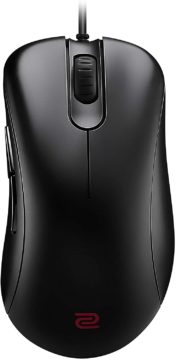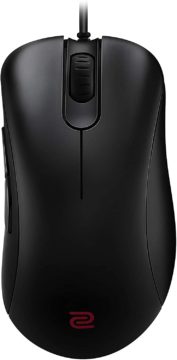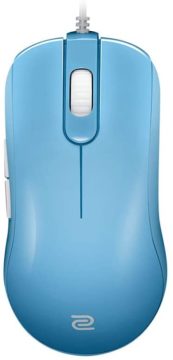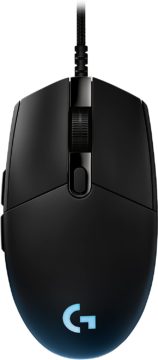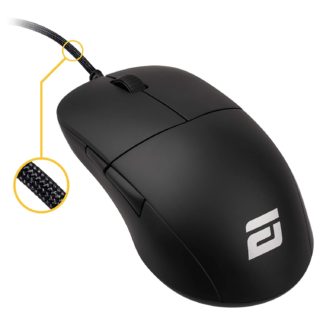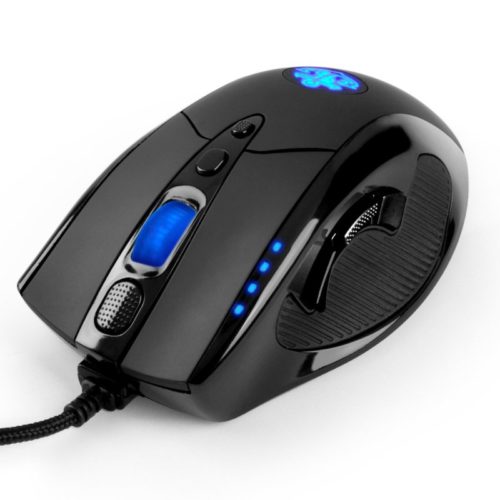Guides
Best Mouse For CS:GO
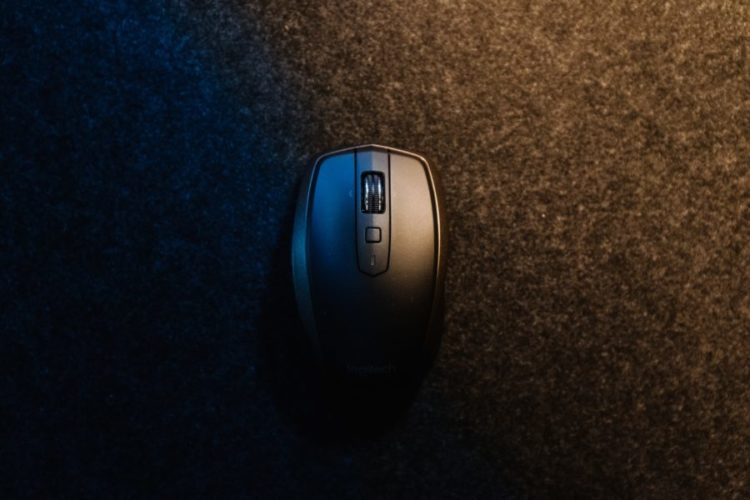
It’s essential to have a good quality mouse at hand while playing CS: GO. With all the extensive hours of playing, your mouse should be well prepared to be clicked away tens and thousands of times. Especially for an FPS game like this, every little advantage counts, and that includes a seamless “mouse experience.”
To help you decide which mouse to choose, we have a list of some of the best mice for CS: GO. Check these out!
Top 6 Best Mouse for CS:GO
1. BenQ Zowie EC1
Zowie’s EC series mouse is preferred by about 33% CS: GO pro users worldwide. That says a lot about its design and the fact that it was catered explicitly towards competitive CS gaming. You’d be surprised to know that EC teamed up with Emil Christensen, the CS legend, to perfect this model, so rest assured it is one of the best out there!
Important Features:
- 3360 optical gaming sensors with 400/800/1600/3200 DPI ensure ultra-accurate movements and responsiveness, giving you the advantage on the battlefield.
- Shape: Ergonomic design with multiple shapes and sizes to maximize performance and provide a comfortable gaming experience for competitive eSports players. Based on the Microsoft Intellimouse models, this has just the perfect shape for comfortable playing.
- Very simple to use, fuss-free, and designed for minimalistic plug and play principle.
- It has consistent tactile feedback that eliminates double switch pressing, thus ensuring efficiency in functionality.
- It has an adjustable report rate of 125/500/1000Hz with different response levels.
- There is no requirement of drivers allowing players to plug and play.
- Cable Length: 2m / 6.6ft.
- Warranty: 1 Year
- User Review on Amazon: 4.2/5
- Price: $84.70
Takeaway:
With an impressive build quality, exclusive shape and design for CS: GO players, and an excellent sensor, this is undoubtedly one of the best choices out there if you are looking for some serious gaming and small yet essential advantages that come with a good mouse!
2. BenQ ZOWIE EC2
Now, this has all the features of EC1 except the size. While EC1 is a bit bigger (3mm higher and 3mm broader at the front and middle, and the bottom part of the mouse is 5mm broader), EC2 comes with a smaller build. Also, EC2 is lighter than EC1. Let’s take a look at the important specifications.
Important Features:
- 3360 optical sensor with 400/800/1600/3200 DPI to give you a unique tracking experience.
- It has an ergonomic design with multiple shapes and sizes to maximize performance and provide a comfortable gaming experience for competitive esports players.
- The attachment point mouse cable is raised at an angle to lower the chance of cable drag on the mousepad.
- Shape: Ergonomic design with multiple shapes and sizes to maximize performance and provide a comfortable gaming experience for competitive eSports players. Based on the Microsoft Intellimouse models, this has just the perfect shape for comfortable playing.
- It has an adjustable report rate 125/500/1000Hz for different levels of responsiveness
- Plug and Play (No drivers required).
- Cable Length: 2m / 6. 6ft.
- Warranty: 1 Year.
- User Review on Amazon: 4.4/5
- Price: $72.42
Takeaway:
This is yet another great product from Zowie, designed for CS players. It comes with good battery life, an ergonomic built, high durability, and a better grip than EC1, especially if you want it for standard claw or fingertip.
3. Logitech G703
The Logitech G703 comes with the Hero 16K Sensor, Lightspeed wireless technology with high responsiveness and connectivity for long-lasting gameplay of up to 35 hours of continuous play with default LIGHTSYNC RGB lighting. It has robust dpi and high accuracy. Moreover, in this model, you can charge wirelessly on the PowerPlay mat without having to plug in the USB charger. Now, let’s take a more detailed look at the specifications.
Important Features:
- Product Dimension: Length: 124 mm (4.9 in), Width: 68 mm (2.8 in), Height: 43 mm (1.7 in).
- Designed explicitly for Pro Gamers: G Pro Wireless Gaming Mouse is the result of collaborative work with professional gamers, bringing in advanced technologies to this ultralight model.
- Light-speed Wireless: The limitations of wireless latency is overcome by Pro-grade performance. It also ensures better connectivity and power support to deliver a neat, 1-millisecond report rate of connection. Through end-to-end engineering and design, Logitech G developed a robust wireless solution to solve the fundamental problems of latency, stability, and connectivity. The end result is LIGHTSPEED, a pro-grade wireless solution that is actually faster than many wired gaming mice.
- The advanced metal-spring button tensioning helps keep the primary left and right mouse buttons well poised to trigger with lesser force. This leads to exceptional button feel, responsiveness, and consistency every time you click.
- Hero 16K Sensor: This is Logitech’s most accurate sensor to date with up to 16,000 DPI and ten times the power efficiency of the previous generation for the ultimate in wireless gaming speed, accuracy, and responsiveness. Microprocessor: 32-bit ARM
- The game-driven, full-spectrum RGB lighting responds to not only in-game action, audio, but also screen color, synchronizing across G gear. You can customize lighting animations and effects from ~16.8M colors using G HUB gaming software, and personalize to match your rig.
- Ultra Lightweight: The innovative endoskeleton has been designed to create a super-thin yet incredibly durable outer shell, that enables the body to weigh in at a remarkably light and manageable 80 grams.
- PowerPlay mat for charging: With the POWERCORE module, the POWER PLAY energy field is transformed into a charging current. It is attached magnetically to the compatible wireless gaming mice.
- Ergonomic Ambidextrous Design: This is a tournament-ready mouse developed with esports pros for maximum comfort, control, and 50 million click durability. The four removable side buttons for supreme customization.
- Cable length: 1.80 meters.
- The durability of the button: 50 million clicks.
- Customer rating on Amazon: 4.5/5.
- Price: $200.
Takeaway:
G703 has PowerPlay support and the latest HERO sensor, which is undoubtedly among the best in the market accuracy-wise. Also, it has an estimated button capacity of 50 million clicks. Moreover, it has a nice grip, good battery life, and overall good quality mouse for long hours of CS: GO, although the pocket pinch is slightly on the steeper side.
4. BenQ ZOWIE FK1
This is an ambidextrous model from BenQ, designed for both left and right hand. It has a rather flat design with an Ambi shell, ideal for users preferring to use a claw or fingertip grip. Take a look at some of the features.
Important Features:
- The 3310 optical sensor has 400/800/1600/3200 DPI that provides you with a unique tracking experience.
- The ambidextrous design with multiple shapes and sizes aims to maximize performance and provide a comfortable gaming experience for competitive esports players
- Consistent tactile feedback lets you avoid double pressing of switches, thereby ensuring functional efficiency.
- It has an adjustable report rate 125/500/1000Hz for different levels of responsiveness.
- Plug and Play (No drivers required)
- Cable Length: 2m / 6. 6ft
- Warranty: 1 Year.
- User Review on Amazon: 4.4/5
- Price: $59.99
Takeaway:
This a very inclusive model from Zowie, keeping in mind people of all shapes and preferences. Plus, the FK series also offers larger sizes according to your suitability.
5. Logitech G Pro
G Pro comes with a cutting edge technology from the house of Logitech. It has configurable side buttons, over 40 hours of battery life, flawless HERO sensor, and lightweight technology.
Important Features:
- The Physical specifications are as follows-Height: 116.6 mm Width: 62.15 mm Depth: 38.2 mm.
- Pro gaming: Its lightweight body and optical gaming sensor deliver unprecedented speed and aiming precision needed at the highest level of eSport competition. This mouse is created by Logitech G and top competitive eSports professionals for performance play.
- The weight is 3 ounces.
- Sensor: Advanced PMW3366 optical gaming sensor delivers exceptional tracking accuracy at any hand speed for precise pixel targeting and high-speed maneuvers across the entire 200 to 12,000 DPI range
- Click efficiency: Metal Spring Button Tensioning System designed for ultra-consistent and reliable click performance at the highest level of competition. 6 Programmable Buttons.
- LIGHTSYNC technology: Pro Gaming Mouse features Logitech G LIGHTSYNC technology—next-gen RGB lighting driven by actions in over 300 top games. Customize colors + effects across LIGHTSYNC mice, keyboards, headsets, and speakers for new gaming intensity.
- It is customizable according to your style, with up to 16.8 million RGB lighting colors, team colors, and setup which also synchronizes with other Logitech G gaming gear.
- There are six programmable buttons and onboard memory make it easy to set up and store one-trigger custom commands for CS: GO players.
- User Review on Amazon: 4.3/5
- Price:$96.90
Takeaway:
This Pro Gaming Mouse was inspired by the classic lines of the Logitech G100 and G100s body and is one of the most highly recommended gaming mice out there. With great battery life, comfortable to hold shape, ergonomic design, and high durability, this is a good choice for CS: GO players!
6. ENDGAME GEAR XM1
This is a professional gaming mouse from Endgame Gear Analogue technology with a <1 ms button response time. It is equipped with a PMW3389 PixArt sensor that comes with a 16.000 CPI. The pre-selected Omron switches are designed for 50 million clicks. Also it has a low weight of just 70g & 2 mm LOD Low-friction PTFE glides for maximum precision.
Important Features:
- Ultra-lightweight: 70 g. The ergonomic right-handed gaming mouse is designed to give you full control while letting you play at peak performance without fatiguing your arm. With a resource-efficient mouse software, players can adjust the XM1’s settings and buttons without impeding their gaming system’s performance.
- Equipped with Pixart sensor capable of up to 16,000 CPI.
- Pre-sorted switches for an ideal click feeling.
- Analog technology: XM1 combines a patented analog switch contact algorithm with pre-sorted mechanical OMRON 50M switches. The result is a single switch response time of less than one millisecond to guarantee reliably sharp switch actuation, which is vital in all competitive gaming situations.
- It has been skilfully developed by esports veterans for professional gaming performances in any competitive environment. It has a sleek and durable design, that supports of all grip types. Moreover, the fast Analogue Technology enable every pro gamer to concentrate and focus on what are crucial aspects.
- Sensor: The low reaction times go hand in hand with the top-of-the-line Pixart PMW3389 optical sensor that ensures exceptional responsiveness, adjustable CPI sensitivity for low, mid, and high sense gamers as well as a very short lift-off distance. An adjustable host-side USB polling rate of up to 1,000 Hz equals signal interval times of as little as one millisecond augmenting the XM1’s unique internal switch signal processing.
- Precision manufacturing paired with highly durable and pre-selected OMRON 50Mswitches ensure that the XM1 leaves a long-lasting impact in any gamer’s life. To illustrate the mechanical switches’ longevity, their estimated lifespan is rated to handle 50 million actuations. Silent and low-friction PTFE glide contributes to maintaining high pointer accuracy by reducing repeated swift movements’ tiring effect.
- Grip: With an anti-sweat coating on the surface and a slightly roughening, you get a firm grip under all circumstances. The large Teflon feet, however, ensure smooth sliding of the mouse.
- Symmetry: The XM1 has a symmetrical design and is equipped with two central buttons, two thumb buttons and the mouse wheel itself.
- Cable called Flex cord: It is a braided cable and allows very tight bending radii. To further reduce cable drag, the XM1’s stress relief is angled upwards to create enough clearance between cable and surface area. As a result, mouse movements feel unrestricted and almost wireless-like. A ferrite bead at the end of the Flex Cord reduces signal noise.
- Price: $67.66
Takeaway:
XM1 has taken a lightweight mouse to another level. This is actually one of the lightest mice out there with fantastic grip, a good sensor, nice shape, and overall suitability to use in CS: GO gaming.
Concluding Remarks
For CS: GO players, there are a lot of options out there for a good quality mouse. So, research and survey well, and think about what suits you the best. Go by your preference and ensure comfortable gaming. Moreover, just because a model is excellent and famous doesn’t mean you have to choose that only. Choose wisely, and enjoy it!
Guides
Escape From Tarkov Cheats: Premium EFT Hacks, ESP, Aimbot, and more!
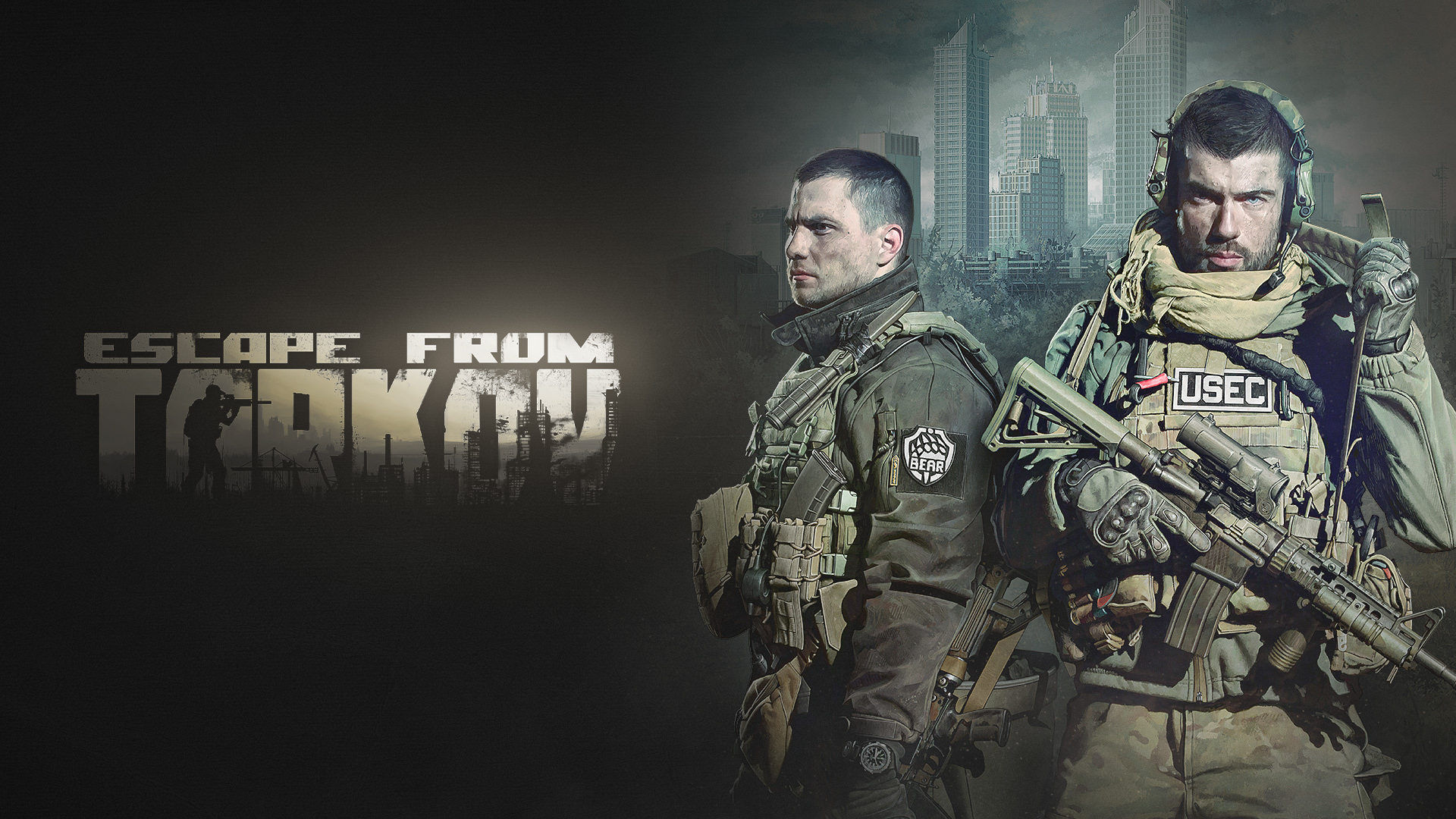
Escape from Tarkov (EFT) is all about high-intensity, complicated, and high-stakes survival gameplay. In each and every single raid, players generally stand to lose valuable gear, and they face foes treated with a hyper-realistic touch of skill. While some spend hours upon hours honing their skills, there are others who turn to Escape from Tarkov cheats and hacks to get the quickest advantage. These include very powerful features such as aimbots with ESP, wallhacks, radar hacks, and even auto-loot systems-with any one of these giving the player the unfair advantage in raids.
At Unigamesity, we have noted the increased interest in EFT hacks. Constantly, players are searching for manual ways to improve their gameplay. This article goes in-depth into the various types of Tarkov cheating methods, explaining how they work and why they have garnered so much popularity within the player base. With multicrystal clarity, these tools equip the user with almost superhuman prowess-from greater aim precision to seeing enemies through walls. So let’s start unraveling the most speculated Escape from Tarkov cheats and what remains practically irresistible to the players.
Understanding Escape From Tarkov Cheats and Hacks
Escape from Tarkov cheats, often referred to as EFT hacks, are third-party tools created to give players a competitive edge. These tools range from simple overlays that reveal item locations to advanced systems capable of controlling recoil, tracking enemies, and automating loot collection.
Some of the most common features include:
- Aimbot – automatic aiming assistance.
- ESP (Extra Sensory Perception) – displays information like player names, health, and distances.
- Wallhack – allows vision through solid objects.
- Radar hacks – show player positions on a minimap-style overlay.
- Auto loot systems – grab valuable items instantly.
These tools are frequently updated to bypass Tarkov’s anti-cheat protections and work seamlessly with the latest patches. At Unigamesity, we’ve noticed how popular these hacks have become due to EFT’s steep learning curve and the punishing nature of raids.
Also Read: League of Legends: All Level Borders Explained
How Escape From Tarkov Aimbot Changes the Game
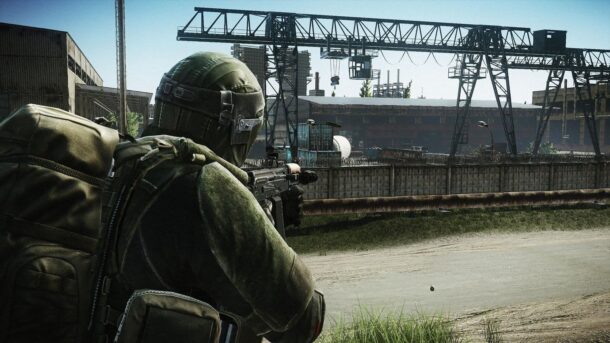
The aimbot is perhaps the most well-known Tarkov cheat. It locks a player’s aim directly onto enemies, making firefights almost unfairly easy.
Key features of EFT aimbots include:
- Bone targeting – choose whether to aim for the head, chest, or legs.
- Recoil control – reduces weapon kickback, making automatic fire far more accurate.
- Field-of-view adjustments – lets players decide how wide the aimbot scans for targets.
- Smooth aim & aim delay – makes the aiming look more natural to avoid suspicion.
In a game where split-second gunfights determine survival, an aimbot offers a massive advantage. For many, it removes the frustration of mastering EFT’s steep recoil system and lets them focus on looting and survival.
The Power of ESP in Tarkov Cheats
ESP, or Extra Sensory Perception, is another fan-favorite hack. With ESP, players can see hidden information layered over their screen, such as:
- Enemy names and health bars.
- Distance markers for enemies and loot.
- Highlighted extraction zones.
- Rare item locations.
This cheat turns Tarkov into a map full of glowing markers, removing the stress of blind exploration. ESP is also highly customizable, allowing players to filter what they want to see—whether that’s only high-value loot or specific player threats. According to Unigamesity, this versatility makes ESP one of the most common cheats in Escape from Tarkov.
Also Read: Valorant Agent Release Order: A Complete Timeline
Wallhacks: Spot Enemies Before They Spot You
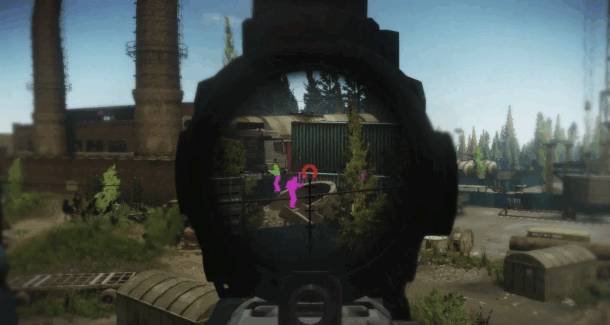
Wallhacks push awareness to the next level by letting players see opponents through solid objects. Whether hiding behind doors, crouching in buildings, or camping stairwells, no enemy remains truly hidden.
Features often included with EFT wallhacks:
- Skeleton outlines of players.
- Glow effects around enemies.
- Real-time tracking of movement through walls.
For those who fear ambushes or surprise attacks, wallhacks virtually eliminate uncertainty. Combined with ESP, wallhacks offer full knowledge of the battlefield before engaging in any fight.
Radar Hacks: Map Awareness at Its Peak
Radar hacks function like a permanent minimap, displaying player positions in real-time. This feature helps players avoid dangerous hotspots, plan ambushes, and track movement across Tarkov’s large maps.
A radar hack is especially powerful in squad-based play, where knowing exact enemy locations makes coordination simple. With this cheat, no opponent can sneak up unnoticed.
Advanced Features: Auto Loot, FOV Control, and Player Identification
Beyond the classic hacks, many premium Escape from Tarkov cheats now include advanced features:
- Auto Loot – automatically collects items based on custom filters. Players can prioritize rare loot while ignoring junk.
- Situational FOV Adjustment – dynamically changes aimbot scanning range depending on the scenario, making cheats appear more natural.
- Player Name Display – shows usernames on screen, even through walls, helping players identify high-value targets or avoid streamers.
These premium features make Tarkov cheats feel more like fully integrated tools rather than simple add-ons.
Also Read: LoL Champions by Release Date: A Complete Timeline
The Risks of Using Escape From Tarkov Cheats
While cheats may sound appealing, they come with significant risks. EFT uses BattlEye anti-cheat software, which is constantly updated to detect hacks. Getting caught can result in permanent bans, lost progress, and wasted money.
Additionally, many so-called “undetectable” cheats may come from shady providers, risking malware infections or account theft. At Unigamesity, we always stress the importance of caution when exploring these tools online.
Why Players Search for EFT Cheats Despite the Risks
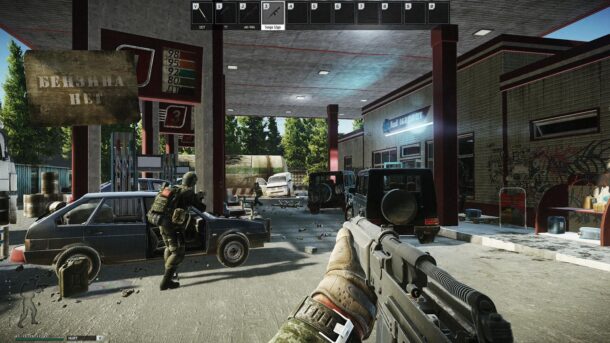
Escape from Tarkov is notoriously punishing. Hours of grinding can be lost in a single raid, and new players often struggle against veterans with better gear and map knowledge. Cheats offer a shortcut, giving less experienced players the ability to compete.
For some, it’s about curiosity. For others, it’s about saving time and resources. Ultimately, EFT cheats remain popular because of how much pressure Tarkov puts on its players.
FAQs
Q1: What is the most popular Escape From Tarkov cheat?
The two most common cheats employed are Aimbot and ESP, which give massive advantages in perfect aim and battlefield awareness.
Q2: Can EFT cheats get you banned?
Yes. BattlEye and other detection systems routinely lay the banhammer on accounts caught in the act of cheating. Most of these bans are permanent.
Q3: Are “undetectable” hacks really safe?
There is no cheapware that can claim to be 100% safe. Even the so-called premium ones sooner or later face detection.
Q4: Why do people use cheats in Escape from Tarkov?
Some players do so in an attempt to compete with veterans, speed up their looting, or just to have fun trying powerful tools.
Q5: Does Unigamesity recommend using EFT cheats?
Unigamesity lists the cheats for informational purposes only, and players should be aware of the risks involved in exploring them.
Also Read: How to Make Plant in Little Alchemy 2: Beginner Guide
Conclusion
A hardcore, high-stakes game where being skillful, alert, and prepared matters much. For the many players who find this steep learning curve too much to bear, EFT cheats such as the aimbot, ESP, wallhacks, and radar offer short dues for survival and domination. They offer easier raiding and greater rewards through better aim, better information, and faster looting.
Here at Unigamesity, we’ve seen these cheats become highly popular in 2025 and why so many players get pulled in by them despite the risks. The temptation of premium hacks might be hard to resist, but it is always recommended to stay aware of the consequences- permanent bans, losing your account, or even a security risk.
Guides
Valorant Agent Release Order: A Complete Timeline

Key Takeaways
- Valorant launched in June 2020 with 11 agents and has steadily added more with each episode.
- Agents are divided into four roles: Duelist, Controller, Initiator, and Sentinel.
- Each new agent influences the game’s meta, often changing team compositions and strategies.
- Characters like Killjoy, Chamber, and Gekko introduced new ways to control space and gather intel.
- Valorant’s lore includes Radiants, mirror Earth threats, and secret tech developments across the globe.
Introduction
Valorant has evolved since it first launched, and with every new agent that comes into play, the game just keeps getting better and better. Let’s find out when your favorite agent made their debut? We’ve put together a list of all Valorant agents in the order they were released, with their dates and roles.
What Is An Agent In Valorant?
In Valorant, the agent you pick is more than just a character with a cool skin and a weapon; they’re your key to victory in every match. Each agent has their own set of unique abilities that are used to smoke out enemies, reveal hidden dangers, heal teammates, or create total mayhem.
They’re categorized into four distinct roles: Duelists (the aggressive entry fraggers), Initiators (the intel gatherers), Sentinels (the defensive experts), and Controllers (the map manipulators). No two agents play alike, which keeps the game feeling fresh and exciting every time you jump in.
Riot Games is always adding new agents to the mix, each one crafted to change up the gameplay. So, choosing your agent isn’t just a routine before the match, it’s a crucial decision that influences the outcome of any round.
Valorant Agent Release Order: Full Chronological List

Since its debut in June 2020, Valorant has been on a constant journey of evolution. Each new character brings unique abilities, fresh team dynamics, and strategic changes that keep the gameplay thrilling.
Also Read: Call of Duty: Black Ops 6 – Campaign Review
Launch Roster (June 2, 2020)
- Brimstone – Controller
- Viper – Controller
- Omen – Controller
- Phoenix – Duelist
- Jett – Duelist
- Reyna – Duelist (technically the first post-beta agent, but added at launch)
- Sage – Sentinel
- Sova – Initiator
- Cypher – Sentinel
- Breach – Initiator
- Raze – Duelist
Episode 1: Ignition
- Act 2 (August 4, 2020) – Killjoy (Sentinel)
- Germany’s turret-wielding genius added fresh defensive tactics with her gadgets.
Episode 2: Formation
- Act 1 (January 12, 2021) – Yoru (Duelist)
- Valorant’s first stealthy agent introduced teleportation and deception to the game.
Episode 3: Reflection
- Act 1 (June 22, 2021) – KAY/O (Initiator)
- This is a robotic agent designed to suppress enemy abilities and disrupt aggressive plays.
Episode 3: Reflection
- Act 3 (November 2, 2021) – Chamber (Sentinel)
- The stylish French marksman was introduced to bring a deadly mix of precision and teleportation.
Episode 4: Disruption
- Act 1 (January 11, 2022) – Neon (Duelist)
- This is a high-speed agent from the Philippines who electrified the pace of entry plays.
Episode 4: Disruption
- Act 3 (April 27, 2022) – Fade (Initiator)
- A Turkish agent with nightmare-themed intel-gathering abilities.
Episode 5: Dimension
- Act 1 (June 22, 2022) – Harbor (Controller)
- Coming from India, Harbor brought water-based smoke and crowd control abilities to the game.
Episode 6: Revelation
- Act 1 (January 10, 2023) – Gekko (Initiator)
- From Los Angeles, Gekko introduced an adorable creature-based utility to support his team.
Episode 7: Evolution
- Act 1 (June 27, 2023) – Deadlock (Sentinel)
- A Norwegian agent who brought high-tech crowd-control abilities to slow down fast entries.
Episode 8: Defiance
- Act 1 (January 9, 2024) – Iso (Duelist)
- A Chinese agent focused on isolating 1v1 duels and bulletproof barriers.
Episode 9: Revelation
- Act 1 (June 25, 2024) – Clove (Controller)
- Clove introduced a unique death-based revive mechanic, shaking up post-death impact.
Also Read: Goodbye Volcano High Review
What Are Some Notable Shifts In Meta Due To New Agents?

Valorant’s meta has gone through some pretty wild changes over time, largely thanks to new agents shaking up the usual strategies. Every time Riot introduces a new character, it feels like someone hit the reset button on team compositions and playstyles.
- When Killjoy came onto the scene, defensive setups got a serious boost. Her turret and lockdown ability made it a lot tougher for teams to rush sites without a second thought. She really empowered Sentinels, especially in solo queue where map control is crucial.
- Yoru started off a bit lackluster, but after his rework, he brought a whole new level of mind games to the table. With his tricky teleports, fake-outs, and unpredictable flanks, defending became a lot less straightforward and required much better communication.
- Chamber came with his teleportation skills and unique guns, he took the place of traditional Sentinels and even some Duelists in various pro team compositions. Players loved his quick escapes and one-shot capabilities, where he was a force to be reckoned with in both ranked matches and esports until Riot decided to tone him down a bit.
- Then we saw Fade stepping in to take over the recon role from Sova in a lot of lineups. Her abilities made it easy to spot enemies without needing that perfect aim. Teams appreciated her Haunt and Prowlers, especially in tight spots and during post-plant situations.
- And just when you thought it couldn’t get any more interesting, Gekko arrived, shifting the meta towards agents who could juggle multiple tasks. His creatures could plant, flash, and gather intel all at the same time, making him a key player on both offense and defense.
What Is The Lore Timeline Of Valorant Agents?
Valorant’s lore unfolds in a near-future Earth, following a pivotal event known as First Light, which unleashed mysterious energy surges around the globe. This phenomenon led to the emergence of Radiants, people who gained extraordinary abilities. To harness and comprehend this newfound power, the Valorant Protocol was established, a worldwide task force comprising both Radiants and non-Radiants.
The narrative kicks off with early agents like Brimstone, Viper, and Phoenix, who represent the first wave of operatives. As new agents come on board, the lore deepens with each Episode, often teasing connections, rivalries, or personal quests. For instance, Yoru delves into ancient Radiant sites in Japan, while Fade reveals secrets through her fear manipulation. Meanwhile, Chamber and Deadlock are engaged in more clandestine and experimental tech initiatives.
As the story progresses, a significant twist emerges, there’s a mirror Earth inhabited by enemy agents from an alternate dimension. This adds an intriguing layer to the gameplay, explaining why players frequently encounter the same agents on rival teams. The stakes rise as more agents are enlisted to defend Earth against these mirrored threats.
Also Read: The Hundred Line: Last Defense Academy Review
What Has Been The Community Reactions And Fan Favorites?

The Valorant community is always ready to voice their thoughts when new agents make their debut. Take Reyna and Jett, for instance, these two quickly became fan favorites thanks to their flashy and aggressive playstyles. Then there’s Chamber, who also collected a huge following; players were drawn to his precision and laid-back personality, even if his dominance led to some balance concerns.
When Neon came onto the scene, fans were thrilled to see Filipino representation, and her fast-paced gameplay added a fresh twist to the game. Gekko, on the other hand, won hearts with his wholesome vibe and inventive utility, particularly his cute little creature sidekicks.
However, not every agent has hit the mark. Agents like Yoru at launch and Deadlock received a more mixed response, with players feeling they were either underwhelming or just didn’t make a significant impact.
Conclusion
Valorant’s ever-expanding roster of agents keeps the game exciting, competitive, and bursting with personality. It has iconic characters that people loved at launch to the game-changing newcomers.
Guides
League of Legends: All Level Borders Explained
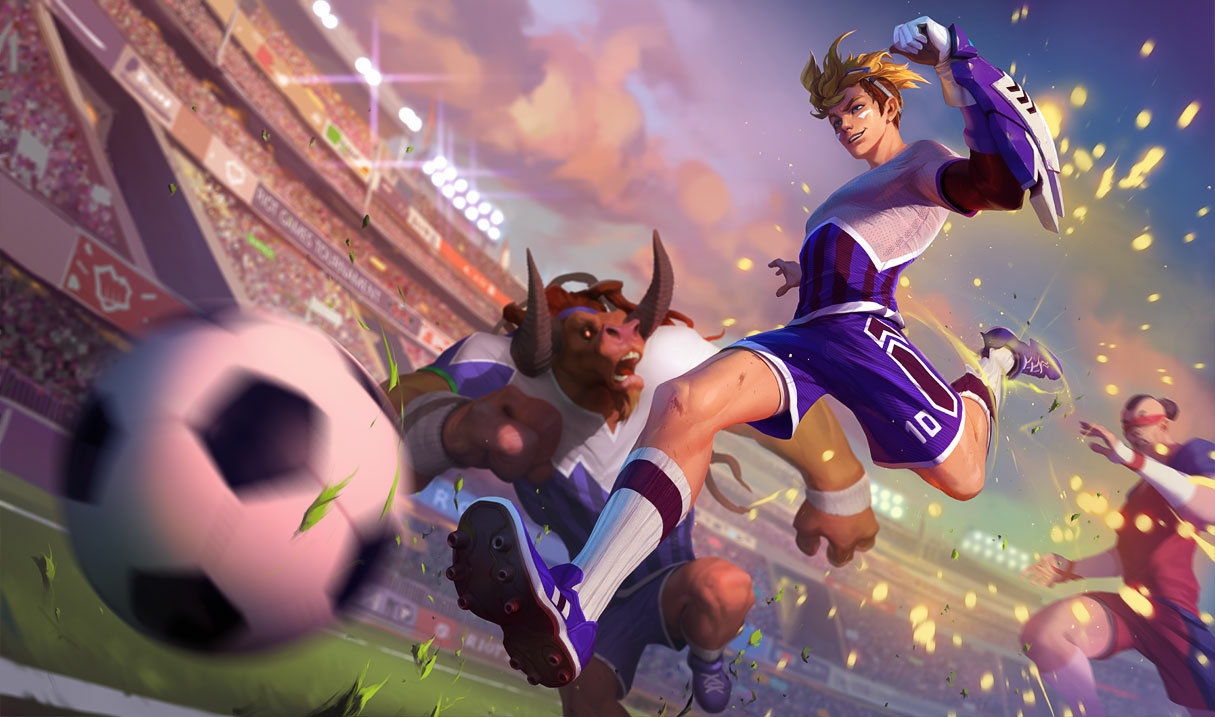
Key Takeaways
- Level borders are purely cosmetic frames that showcase your account level, not your skill.
- Riot Games offers 21 unique level borders, from Level 1’s Piltover frame to the rare Level 500 Eternus border.
- XP is earned by playing matches, with Summoner’s Rift generally providing the most.
- Level borders differ from ranked borders, which reflect seasonal performance.
- Common misconceptions include thinking borders improve gameplay or are linked to rank.
- Grinding for level borders is worth it for collectors and players who value visual progression.
Introduction
Level borders in League of Legends are a fun way to reward players for their time spent in the game. And to keep platers interested, Riot has come up with a variety of designs, all the way up to level 500.
In this article, we’ll explore all the level borders in detail!!
How Level Borders Work In League of Legends?
In League of Legends, level borders are eye-catching frames that pop up around your profile icon, showing your experience and commitment to the game. They’re all about aesthetics, no added damage or hidden perks and just a way to show off a bit.
Here’s the deal: Every time you level up your account, you gather XP from playing matches. As you hit certain level milestones, your border automatically gets a fresh design and color scheme. You can think of it as your personal “veteran badge” that evolves as you do.
The early levels change pretty quickly, so you’ll get to enjoy new borders more often. But once you start climbing past the higher milestones (like Level 300, 400, or 500), those upgrades become a lot rarer and way more prestigious. It’s Riot’s way of saying, “Yep, this player’s been around the Rift for a while.” And level borders are linked to your account level, not your ranked performance.
Complete List Of Level Borders And Their Level Requirements

- Level 1: Piltover Border
- Level 30: Zaun Border
- Level 50: Hextech Border
- Level 75: Fire Border
- Level 100: Archlight Border
- Level 125: Infused Border
- Level 150: Shadow Isles Border
- Level 175: Shurima Border
- Level 200: Lunari Border
- Level 225: Warring Kingdoms Border
- Level 250: Freljord Border
- Level 275: Battlecast Border
- Level 300: Ionia Border
- Level 325: Bilgewater Border
- Level 350: Runic Border
- Level 375: Noxus Border
- Level 400: Celestial Border
- Level 425: Elderwood Border
- Level 450: Void Border
- Level 475: Blood Moon Border
- Level 500: Eternus Border
These 21 unique borders light up at important level milestones, starting with Piltover’s iconic frame at Level 1 and culminating in the epic Eternus border at Level 500. They create a vivid visual timeline that showcases a player’s commitment and journey in the Rift.
Just like level borders showcase your progression, many players also look for unique ways to customize their profiles through league of legends skins codes, adding a personal touch to their in-game experience.
How To Level Up Faster In League of Legends?
Play Summoner’s Rift over ARAM for maximum XP
You’ll generally earn more XP in Summoner’s Rift compared to ARAM or other game modes, especially during longer matches. Stick to Normal Blind or Draft Pick for the most reliable XP gains.
Win games when possible
Sure, you still earn XP when you lose, but winning really gives you a nice boost. Choose champions you’re comfortable with to help improve your chances of winning.
Complete daily and weekly missions
Don’t overlook those missions! Even if they’re part of an event or the regular mission system, they can provide bonus XP on top of what you earn from matches. Make sure to tackle them!
Use XP boosts wisely
You can grab XP boosts using Riot Points or Blue Essence. They come in two types—per-win boosts and timed boosts. Using them together can really speed up your leveling process.
Avoid early surrenders
Remember, your XP is linked to how long the match lasts. Surrendering at 15 minutes or going AFK mid-game will seriously cut into your XP gains.
Play in groups
Teaming up with friends can help you secure more wins and make the game more fun, which means you’ll want to play more often without feeling burnt out.
Consistency is key
Playing two or three matches a day will add up much quicker than taking long breaks and then cramming in a bunch of games at once.
Level borders not only showcase your dedication, but they also reflect just how many matches you’ve played – and considering how long is a League of Legends game on average, reaching higher levels is no small feat.
Borders vs. Other Profile Customizations
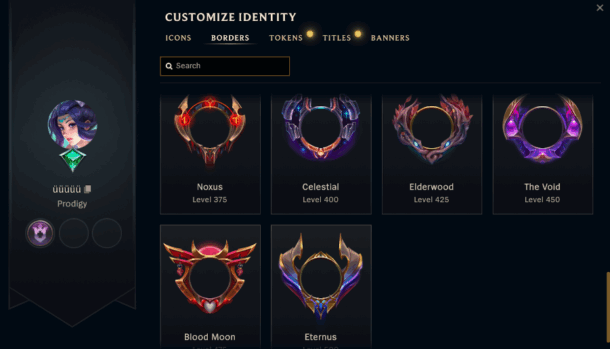
In League of Legends, level borders are just one part of the profile customization experience. They frame your profile icon, changing in design and color as you level up, serving as a subtle way to show off how long you’ve been playing. However, unlike ranked borders or other visuals, they don’t indicate your skill level, just the time you’ve put in.
On the flip side, ranked borders are awarded at the end of each competitive season and reflect your highest rank achieved. They show your competitive skills and are visible in loading screens, making them much more noticeable than level borders.
Then there are profile icons, summoner banners, and loading screen flairs, these often tie into events, achievements, or purchases, allowing for a more personal touch. Skins and chromas, while not part of your profile page, also help you stand out visually during gameplay.
So, what’s the main difference? Level borders change automatically over time, needing no extra effort other than playing the game. Ranked borders and special banners are based on achievements, while icons and flairs are simply collectible. Together, they create your unique visual identity in League, giving other players a glimpse of your experience and accomplishments.
What Are Some Common Misconceptions About Level Borders?
A lot of players seem to get confused about what level borders in League of Legends really mean. One of the biggest myths out there is that these borders reflect a player’s skill level. The truth is, they’re only linked to your account level, which shows how much time you’ve put into the game, not how skilled you are.
For instance, a Level 400 player can actually be less skilled than a Level 50 player who focuses on ranked matches. Another common misconception is that having a higher border gives you in-game perks, like extra stats or better matchmaking, this is totally untrue. Borders are just for show and don’t affect gameplay at all.
Some players also think that level borders are related to ranked borders, but they’re actually two different things: ranked borders reflect your performance in a season, while level borders track your overall account growth.
There’s even a myth that you can “lose” a border if you take a break from playing, but once you earn a border, it’s yours for good.
Lastly, some people believe that XP gains are random, but they actually follow specific rules based on how long the match lasts.
In addition to borders, the league of legends mmr system also plays a big role in how players are matched and progress through ranked games.
Are Level Borders Worth Grinding For In League Of Legends?

Level borders in League of Legends are definitely worth the grind if you love collecting those cosmetic milestones and want to show off your commitment. While they don’t change how you play, they serve as a subtle badge of honor, reflecting the time you’ve poured into the game.
For many players, hitting a rare high-tier border like the Level 500 Eternus frame can feel like a rewarding long-term achievement. That said, if your main focus is on competitive play, these borders won’t help you climb the ranks or improve your skills. Ultimately, they’re all about personal satisfaction and a bit of bragging rights, so it’s only worth the effort if you appreciate visual progression and recognition.
Conclusion
While level borders in League of Legends might not change how you play, they definitely add some flair to your profile and show your journey on the Rift.
-

 Guides6 years ago
Guides6 years ago6 Proven Ways to Get more Instagram Likes on your Business Account
-
Mainstream11 years ago
BioWare: Mass Effect 4 to Benefit From Dropping Last-Gen, Will Not Share Template With Dragon Age: Inquisition
-

 Mainstream7 years ago
Mainstream7 years agoHow to Buy Property & Safe Houses in GTA 5 (Grand Theft Auto 5)
-

 Guides1 year ago
Guides1 year agoFree Fire vs PUBG: Comparing Graphics, Gameplay, and More
-

 Casual2 years ago
Casual2 years ago8 Ways to Fix Over-Extrusion and Under-Extrusion in 3D Printing
-
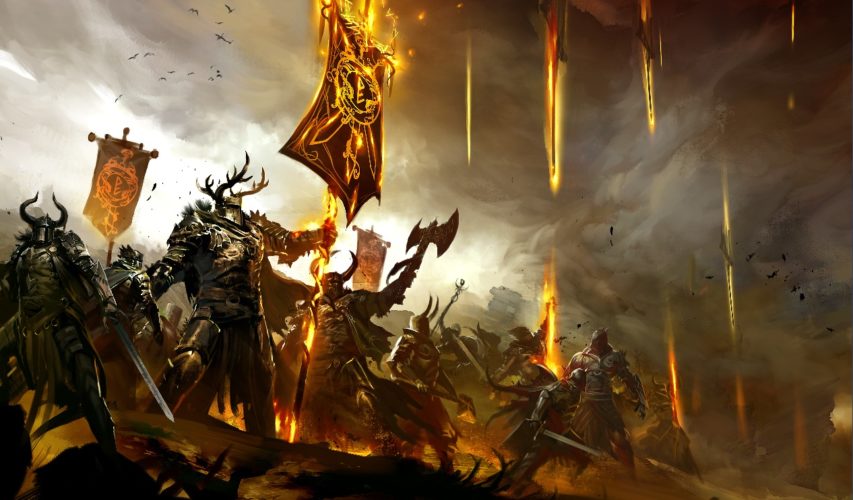
 Mainstream13 years ago
Mainstream13 years agoGuild Wars 2: The eSports Dream and the sPvP Tragedy
-

 Other2 years ago
Other2 years agoAjjubhai UID: Free Fire Details & Earnings
-
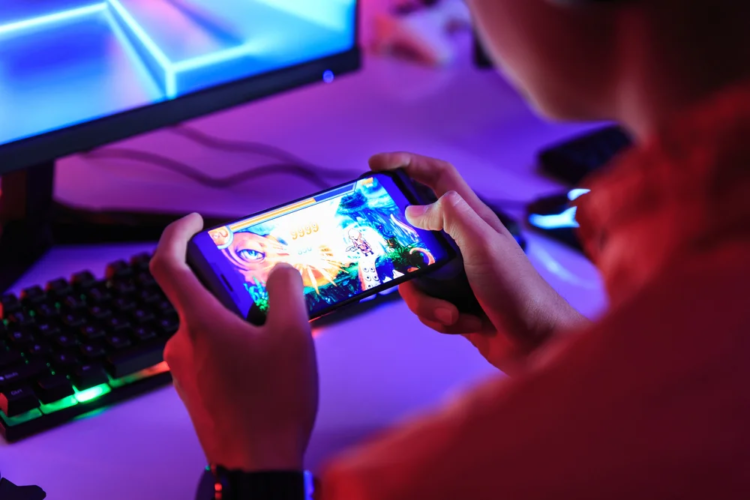
 Gaming News2 years ago
Gaming News2 years agoSwiping, Tapping, and Tilting: How Mobile Games Are Played Today

